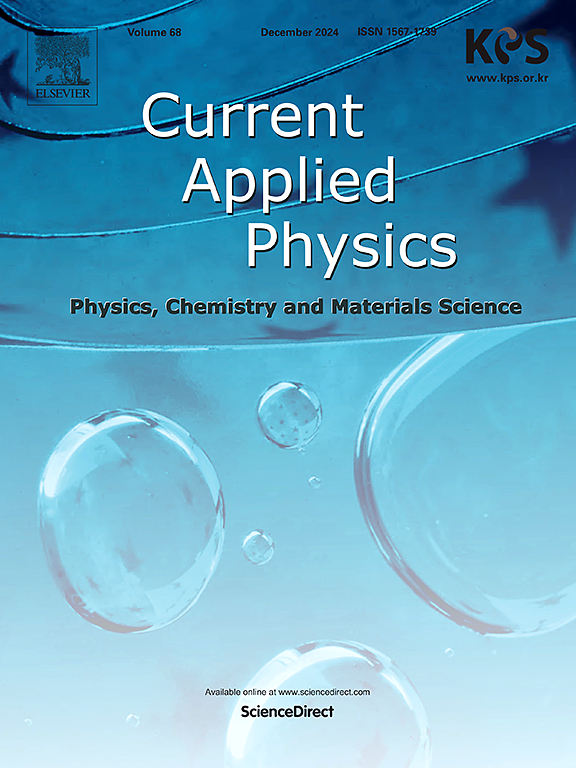Optimized green synthesis of dual-phase metal oxide nanoparticles for environmental remediation
IF 3.1
4区 物理与天体物理
Q3 MATERIALS SCIENCE, MULTIDISCIPLINARY
引用次数: 0
Abstract
This study presents the first reported investigation of Nigella sativa (NS) leaf extract as a natural reducing and stabilizing agent for the green synthesis of copper oxide nanoparticles (NS:CuO NPs). Structural analysis confirmed a mixed monoclinic and cubic phase having crystallite size of 23 nm. The optical study depicted an absorption peak at 361 nm and band gap energy of 2.30 eV. Surface chemistry revealed the functional groups, including O–H, N–H, C–H, C=O, and N–O on the surface of particles, indicating phytochemical capping on the nanoparticle surface. Morphological studies revealed spherical and elongated particles, with diameters of 8–10 nm and lengths ranging from 50 to 125 nm. The NS:CuO NPs showed excellent photocatalytic performance, achieving ∼98 % and ∼89 % degradation of Malachite Green and Congo Red under visible light within 60 min and 140 min, following pseudo-first-order kinetics with a rate constant of 0.05463 , supported min−1 and 0.01548 min−1, respectively. The high efficiency was primarily attributed to superoxide radicalsby other reactive oxygen species. The catalyst maintained over 90 % degradation efficiency after five consecutive cycles.

环境修复用双相金属氧化物纳米颗粒绿色合成优化研究
本研究首次报道了黑草(Nigella sativa, NS)叶提取物作为绿色合成氧化铜纳米粒子(NS:CuO NPs)的天然还原剂和稳定剂的研究。结构分析证实为单斜相和立方相混合,晶粒尺寸为23 nm。光学研究显示在361 nm处有一个吸收峰,带隙能量为2.30 eV。表面化学揭示了纳米颗粒表面的O - h、N-H、C - h、C=O和N-O等官能团,表明纳米颗粒表面存在植物化学盖层。形态学研究显示球形和细长颗粒,直径为8-10 nm,长度为50 - 125 nm。NS:CuO NPs表现出优异的光催化性能,在可见光下,60 min和140 min内对孔雀石绿和刚果红的降解率分别达到~ 98%和~ 89%,符合准一级动力学,速率常数分别为0.05463,支持min - 1和0.01548 min - 1。这种高效率主要归因于其他活性氧的超氧自由基。连续5次循环后,催化剂的降解效率保持在90%以上。
本文章由计算机程序翻译,如有差异,请以英文原文为准。
求助全文
约1分钟内获得全文
求助全文
来源期刊

Current Applied Physics
物理-材料科学:综合
CiteScore
4.80
自引率
0.00%
发文量
213
审稿时长
33 days
期刊介绍:
Current Applied Physics (Curr. Appl. Phys.) is a monthly published international journal covering all the fields of applied science investigating the physics of the advanced materials for future applications.
Other areas covered: Experimental and theoretical aspects of advanced materials and devices dealing with synthesis or structural chemistry, physical and electronic properties, photonics, engineering applications, and uniquely pertinent measurement or analytical techniques.
Current Applied Physics, published since 2001, covers physics, chemistry and materials science, including bio-materials, with their engineering aspects. It is a truly interdisciplinary journal opening a forum for scientists of all related fields, a unique point of the journal discriminating it from other worldwide and/or Pacific Rim applied physics journals.
Regular research papers, letters and review articles with contents meeting the scope of the journal will be considered for publication after peer review.
The Journal is owned by the Korean Physical Society.
 求助内容:
求助内容: 应助结果提醒方式:
应助结果提醒方式:


